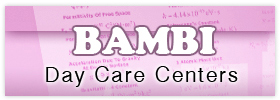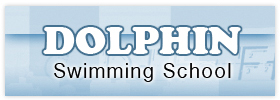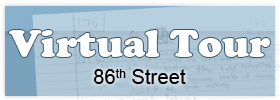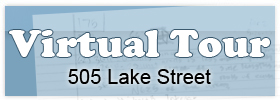The Big Apple Academy’s English Department offers an English Language Arts Program that is closely aligned to the Learning Standards and the Core Curriculum of New York State Department of Education.
The General Learning Standard Definitions are:
A learning standard is an established level or degree of quantity, value, or quality. New York State learning standards are defined as the knowledge, skills, and understandings that individuals can, and do, habitually demonstrate over time — as a consequence of instruction and experience.
New York State English Language Arts Learning Standards:
Standard 1:Students will read, write, listen, and speak for information and understanding. As listeners and readers, students will collect data, facts, and ideas, discover relationships, concepts, and generalizations; and use knowledge generated from oral, written, and electronically produced texts. As speakers and writers, they will use oral and written language to acquire, interpret, apply, and transmit information.
Standard 2: Students will read, write, listen, and speak for literary response and expression. Students will read and listen to oral, written and electronically produced texts and performances, relate texts and performances to their own lives, and develop an understanding of the diverse social, historical, and cultural dimensions the texts and performances represent. As speakers and writers, students will use oral and written language for self-expression and artistic creation.
Standard 3: Students will read, write, listen, and speak for critical analysis and evaluation. As listeners and readers, students will analyze experiences, ideas, information, and issues presented by others using a variety of established criteria. As speakers and writers, they will present, in oral and written language and from a variety of perspectives, their opinions and judgments on experiences, ideas, information and issues.
Standard 4: Students will read, write, listen, and speak for social interaction. Students will use oral and written language for effective social communication with a wide variety of people. As readers and listeners, they will use the social communications of others to enrich their understanding of people and their views.
- READING
- Distinguish between print and pictures
- Recognize the difference between letters and words
- Follow left-to-right and top to bottom direction when reading
- Locate parts of a book
- Recognize and identify letters of the alphabet
- Alphabetize high-frequency words according to the first letter
- Distinguish the difference between vowels and consonants
- Use beginning and ending consonants, as well as vowel sounds, to identify words
- Recognize the different sounds that make up a word aloud, matching spoken word to print
- Recognize words in a text or on a chart when read aloud, matching spoken word to print
- Recognize the singular and plural of frequently used words
- Recognize own name and the names of friends and family in print
- Recognize letter-sound correspondence
- Recognize that words consist of a combination of sounds
- Identify rhyming words
- Monitor own reading by applying strategies (e.g., sounding out letters; using context, grammar, and picture clues; and rereading) to determine meaning
- Read aloud with expression and fluency
- Use computer software to support early reading development
LISTENING
- Listen respectfully and responsively
- Attend to a listening activity for a specified period of time
- Avoid interrupting
- Respond with expression appropriate to what is heard
WRITING
- Create a drawing, picture, sign, or other graphic to represent a word or concept
- Follow left-to-right and top-to-bottom direction when writing
- Use spacing between letters and words when writing on a line
- Write recognizable upper- and lowercase letters in manuscript
- Capitalize the first words of sentences, the letter “I,” and proper nouns, such as names, days of the week, and months
- Write the letters of own first and last names
- Spell high-frequency words correctly
- Use the singular and plural of high-frequency words
- Put words together in sentence format by using – end punctuation, such as periods- various parts of speech, such as nouns and adjectives, and verbs
- Begin to edit your writings, with assistance
- Use beginning-of-sentence capitalization and end punctuation
- Use classroom resources, such as word walls, picture dictionaries, teachers, and peers, to support the writing process
- Give and seek constructive feedback in order to improve writing
- Use computer software to support development of early writing skills
SPEAKING
- Respond respectfully
- Use age-appropriate vocabulary
- Take turns speaking in a group
- Correct the pronunciation of words by using classroom resources, such as teachers, peers, audio- and videotapes, and computer software
- Speak in complete sentences when required
- Stay on topic
- Speak audibly
- Speak with expression appropriate to the occasion
- READING
- Identify purpose for reading
- Use letter-sound correspondence, knowledge of grammar, and overall context to determine meaning
- Use decoding strategies, such as sounding out words, comparing similar words, breaking words into smaller words, and looking for word parts, such as root words, prefixes, and suffixes
- Use self-monitoring strategies, such as rereading and cross-checking
- Apply corrective strategies, using classroom resources, such as teachers, peers, and reference tools
- Recognize the difference between phrases and sentences
- Read with attention to sentence structure and punctuation, such as periods, question marks, and commas, to assist in comprehension
- Engage in independent silent reading
- Locate the name of the author, illustrator, title page, table of contents, index, and chapter headings
- Recognize and discriminate among a variety of informational texts
- Determine the meaning of unfamiliar words by using context clues, dictionaries, and other classroom resources
- Read aloud at appropriate rate
- Read with increasing fluency and confidence from a variety of texts
- Maintain a personal reading list to reflect reading goals and accomplishments
- Use computer software to support reading
LISTENING
- Listen respectfully and responsively
- Attend to a listening activity for a specified period of time
- Avoid interrupting
- Respond appropriately to what is heard
WRITING
- Begin to develop a voice in writing
- Spell frequently used words correctly
- Use basic punctuation correctly, such as commas in a series, in simple/compound sentences, and in friendly letters periods, exclamation points, and question marks apostrophes for contractions and singular possessives, quotation marks for titles and simple dialogue
- Use, in writing simple/compound sentences, – correct tense of regular/irregular verbs – subject-verb agreement – varied vocabulary and sentence structure – various parts of speech, including personal pronouns
- Capitalize words such as literary titles, holidays, and product names
- Write sentences in logical order and create paragraphs to develop ideas
- Use an organizational format that reflects a beginning, middle, and end
- Develop an idea within a brief text
- Learn and use the writing process (e.g., prewriting, drafting, revising, proofreading, and editing)
- Use revision strategies to develop writing, including conferring with teachers and peers, and cutting and pasting
- Determine the intended audience before writing
- Use legible print and/or cursive writing
- Use word processing
SPEAKING
- Respond respectfully
- Initiate communication with peers and familiar adults
- Use age-appropriate vocabulary
- Speak in grammatically correct sentences
- Use gestures appropriate to conveying meaning
- Establish eye contact, when appropriate, to engage the audience
- Speak loudly enough to be heard by the audience
- READING
- Identify purpose of reading
- Adjust reading rate according to purpose for reading
- Use word recognition and context clues to read fluently
- Determine the meaning of unfamiliar words by using context clues, a dictionary, or a glossary
- Identify signal words, such as finally or in addition, that provide clues to organizational formats such as time order
- Use knowledge of punctuation to assist in comprehension
- Apply corrective strategies (e.g., rereading and discussion with teachers, peers, or parents/caregivers) to assist in comprehension
- Read aloud, using inflection and intonation appropriate to text read and to audience
- Maintain a personal reading list to reflect reading goals and accomplishments
LISTENING
- Listen respectfully and responsively
- Identify own purpose for listening
- Recognize content-specific vocabulary or terminology
- Listen for unfamiliar words and learn their meaning
WRITING
- Understand the purpose for writing; the purpose may be to explain, describe, narrate, persuade, or express feelings
- Determine the intended audience before writing
- Use tone and language appropriate for audience and purpose
- Use prewriting activities (e.g., brainstorming, note taking, freewriting, outlining, and paragraphing)
- Use the writing process (e.g., prewriting, drafting, revising, proofreading, and editing)
- Use teacher conferences and peer review to revise written work
- Observe the rules of punctuation, capitalization, and spelling, such as punctuation of compound sentences, friendly/business letters, simple dialogue, and exact words from sources (quotations); use italics/ underlining for titles – capitalization of proper nouns such as key words in literary and/or book titles, languages, and historical events, spelling of commonly misspelled words, homonyms, and content-area vocabulary
- Use correct grammatical construction in – parts of speech such as nouns; adjectives and adverbs (comparative/superlative); pronouns (indefinite/nominative/objective); conjunctions (coordinating/subordinating); prepositions and prepositional phrases; and interjections – simple/compound/complex sentences, using, correct subject-verb agreement, verb tense, punctuation, and pronouns with clear antecedents
- Use signal/transitional words (e.g., in addition, for example, finally, as a result, similarly, and on the other hand) to provide clues to organizational format
- Use dictionaries, thesauruses, and style manuals
- Use word processing skills
SPEAKING
- Respond respectfully
- Initiate communication with peers, teachers, and others in the school community
- Use language and grammar appropriate to purpose for speaking
- Use facial expressions and gestures that enhance communication
- Establish eye contact during presentations and group discussions
- Use audible voice and pacing appropriate to content and audience
- Use visual aids to support the presentation
- READING
- Identify a purpose for reading
- Adjust reading rate according to the purpose for reading
- Use word recognition and context clues to read fluently
- Determine the meaning of unfamiliar words by using context clues, a dictionary, a glossary, and structural analysis (i.e., looking at roots, prefixes, and suffixes of words)
- Distinguish between dictionary meaning and implied meaning of the author’s words
- Identify transitional words or phrases, such as furthermore or in comparison, that provide clues to organizational formats such as compare/contrast
- Use knowledge of punctuation to assist in comprehension
- Apply corrective strategies, such as discussing with others and monitoring for misunderstandings, to assist in comprehension
- Seek opportunities for improvement in reading comprehension by choosing more challenging writers, topics, and texts
- Maintain a personal reading list to reflect reading accomplishments
LISTENING
- Adapt listening strategies to different purposes and settings
- Listen respectfully and responsively
- Identify own purpose for listening
- Recognize content-specific vocabulary or terminology
WRITING
- Understand the purpose for writing; the purpose may be to explain, describe, narrate, persuade, or express feelings
- Identify the intended audience
- Use tone and language appropriate to audience and purpose
- Use prewriting activities (e.g., brainstorming, note taking, freewriting, outlining, and paragraphing)
- Use the writing process (e.g., prewriting, drafting, revising, proofreading, and editing)
- Write clear, concise, and varied sentences, developing a personal writing style and voice
- Observe rules of punctuation, italicization, capitalization, and spelling as follows: – punctuate correctly simple/compound/complex sentences, undivided/divided direct quotations, exact words from sources (quotations), titles of articles/literary works, and business letters – use italics and underlining for titles – capitalize proper nouns, such as geographical names, academic courses, and organizations – spell correctly commonly misspelled words, homonyms, and content-area vocabulary
- Use correct grammatical construction in – parts of speech, such as nouns; adjectives and adverbs (comparative/superlative); pronouns (indefinite/nominative/objective); conjunctions (coordinating/subordinating); prepositions and prepositional phrases; interjections; and conjunctions to connect ideas – simple/compound/complex sentences; note especially subject-verb agreement, infinitives and participles, clear antecedents for pronouns, placement of modifiers, and use active voice
- Use signal/transitional words or phrases, such as first, next, and in addition, to produce organized, cohesive texts
- Use dictionaries, thesauruses, and style manuals
- Use computer software (e.g., word processing, import graphics) to support the writing process
- Write for an authentic purpose, including publication
SPEAKING
- Respond respectfully
- Initiate communication with peers and adults in the school and local community
- Adapt language and presentational features for the audience and purpose
- Use language and grammar appropriate to the purpose for speaking
- Use volume, tone, pitch, and rate appropriate to content and audience
- Use effective nonverbal communication
- Use visual aids to enhance the presentation
- Establish and maintain eye contact with audience
- READING
- Identify the purpose for reading
- Adjust the reading rate according to the purpose for reading
- Determine the meaning of unfamiliar words by using classroom and other resources
- Distinguish between dictionary meaning and implied meaning of the writer’s words
- Follow the logic of compound/complex sentence structure
- Use knowledge of punctuation to assist in comprehension
- Identify transitional words or phrases that make text cohesive (e.g., finally, in addition, and in contrast)
- Recognize the organizational format, such as hierarchical, chronological, and cause/effect
- Use strategies such as discussing with others, reading guides and summaries, and reading aloud to assist in comprehension
- Identify opportunities for improvement of reading comprehension skills; for example, exposure to seek a wider range of writers, topics, and styles
- Maintain a personal reading list to reflect reading accomplishments
LISTENING
- Listen respectfully and responsively
- Recognize the use and impact of effective language
- Demonstrate appropriate body language as a listener
- Identify own purpose for listening
- Recognize content-specific vocabulary, terminology, or jargon unique to particular groups of people
WRITING
- Understand the purpose for writing; the purpose may be to explain, describe, narrate, persuade, or express feelings
- Identify the intended audience
- Use tone and language appropriate to the audience and purpose
- Use prewriting activities (e.g., brainstorming, freewriting, note taking, outlining, and paragraphing)
- Use the writing process (e.g., prewriting, drafting, revising, proofreading, and editing)
- Write clear, concise sentences
- Observe the rules of punctuation, capitalization, and spelling – punctuation of simple and compound sentences, dialogue, titles of articles – capitalization of words such as proper adjectives, titles of persons, and words in quotes – spelling of commonly misspelled words, homonyms, content-area vocabulary
- Use correct grammatical construction – parts of speech, such as nouns; adjectives and adverbs (comparative/superlative); pronouns (indefinite/nominative/objective); conjunctions (coordinating/subordinating); prepositions and prepositional phrases; interjections; and conjunctions to connect ideas – complete simple, compound, and complex sentences of varied structure containing dependent clauses and using correct subject-verb agreement, correct verb tense, and pronouns with clear antecedents
- Use dictionaries, thesauruses, and style manuals
- Use an organizational format that provides direction, coherence, and/or unity
- Use computer technology to create, manipulate, and edit text
SPEAKING
- Respond respectfully
- Initiate communication with peers and adults in the school and local community
- Use a presentational format appropriate for the audience and purpose
- Use the conventions of standard spoken English appropriate to the message and audience
- Apply delivery techniques such as voice projection and demonstrate physical poise
- Use nonverbal communication techniques to help disclose message
- Use visual aids and props effectively
- Respond to the audience’s reaction and adapt presentation
- Establish and maintain eye contact with audience










